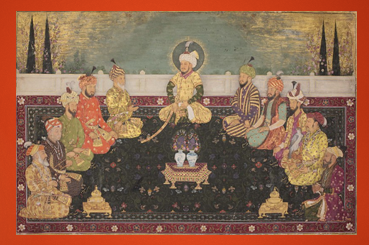Introduction
When Akbar passed away in 1605CE, his remarkable forty-nine-year rule came to an end. Salim or Jahangir, Akbar’s son, rose up in rebellion during the latter years of his father’s reign in the seventeenth century but was eventually caught. But Akbar forgiven him, and Jahangir governed from 1605 CE to 1627 CE after being recognized as the throne’s rightful ruler. The heritage of the Mughals was then carried by Jahangir. The Mughal kingdom flourished after Jahangir’s death under the rule of Shajahan and then Aurangzeb. After Aurangzeb’s passing in the early eighteenth century, under the later feeble Mughals, the Mughal Empire began to fall.
Influence of Mughals in the latter half of the seventeenth century
The Mughals were a very strong group in the seventeenth century due to their control over nearly the entire Indian subcontinent and the immense riches and resources they commanded. Additionally, the kings who presided over the kingdom during this time were among its strongmen. These emperors, like Jahangir, Shahjahan, and Akbar, expanded the kingdom over a vast area of land with their wise policies.

The Rulers of the Mughal Dynasty from Babur to Aurangzeb, with their Ancestor Timur
Salient aspects of the Mughal Empire in the seventeenth century
In the seventeenth century, the Mughal Empire was renowned for:
- Salim, the oldest son of Akbar, became emperor of the Mughals in 1605 CE and adopted the name Jahangir. Most of Akbar’s strategies were maintained by him. His “Golden Chain of Justice,” which allowed the populace to address their problems with him, was his most well-known accomplishment.
- Many European trading companies, including Dutch, Portuguese, and English ones, started to travel to India to develop their trade relations during Jahangir’s rule.
- Shahryar took over as emperor of the Mughals after Jahangir died.(son-in-law of Nur Jahan). He was however murdered by Shahjahan.
- In 1658 CE, Aurangzeb replaced Shahjahan as the monarch. The Mughal Empire included nearly the entire Indian peninsula during his reign, from Chittagong in the east to Kashmir in the north. Other areas included the Hindu Kush in the west and Karnataka in the south. Due to his ineffective managerial practices, the empire’s size could not be maintained.
- The Mughal Empire maintained its strength throughout the seventeenth century under strong leaders. But by the end of the seventeenth century, it started to deteriorate as a result of Aurangzeb’s policies and the ineffectiveness of later, less powerful Mughals who were unable to uphold the Empire as effectively as the earlier ones.
The decline of the Mughal Dynasty
The Mughal Empire started to deteriorate under Aurangzeb’s rule. Many people felt isolated by his policies, which opened the door for their uprisings. The high level of taxes placed on farmers, which made their circumstances worse, hurt the industry as well. Due to Aurangzeb’s successors’ incompetence and weakness, the quality of Mughal authority continued to deteriorate even after his passing. The nobility, on the other hand, increasingly began to challenge Mughal rule as they grew in strength. Finally, taking advantage of all of these factors, foreign invaders began conquering the Mughal kingdom, and at the same time, foreign trading companies started participating in Mughal government problems.
Summary
Babur established the vast Mughal Empire in 1526 CE, and it flourished until the seventeenth century under the competent rule of Mughals like Akbar, Jahangir, Shahjahan, and Aurangzeb. With the entire subcontinent under its control, the kingdom attained its considerable geographical expanse. However, after the seventeenth century, it began to deteriorate because of the feeble and incompetent Mughals who followed Aurangzeb. With the rise to dominance of the regional kingdoms and the English East India company in the late eighteenth and early nineteenth centuries, the Mughal Empire gradually collapsed.
Frequently Asked Questions
1. What exactly was the “Golden Chain of Justice”?
The “chain of Justice” was established by Jahangir. If any official in Jahangir’s government were to engage in corruption of any kind, the offended party could instantly and fearlessly ring the bell to draw the Emperor’s immediate notice. The 80-foot-long necklace was constructed entirely of pure gold. It weighed about 100 kilograms and was made up of 60 chimes.
2. Who ruled as Mughal Emperor at the start of the 17th century?
However, the Mughal royal building has on occasion been assigned a date of 1600, during the reign of Akbar, Babur’s grandson. After the passing of Aurangzeb, the last significant monarch, who oversaw the empire’s expansion to its greatest degree during his rule, this imperial organization persisted until 1720.
3. Who made up the Mughal dominant class?
Umara, Mansabdars and jagirdars, and were members of the Mughal elite aristocracy who held prominent positions. The individuals who held key positions in the government.
4. What led to the uprising under Aurangzeb’s rule?
The sikhs were incensed by the guru tegh bahadur’s execution, which led to the formation of the kalsa, an armed alliance headed by guru gobind singh. Revolts were carried out by jats, rajputs, sikhs, and marathas, who also persecuted the mughals. The kingdom was thus diminished.